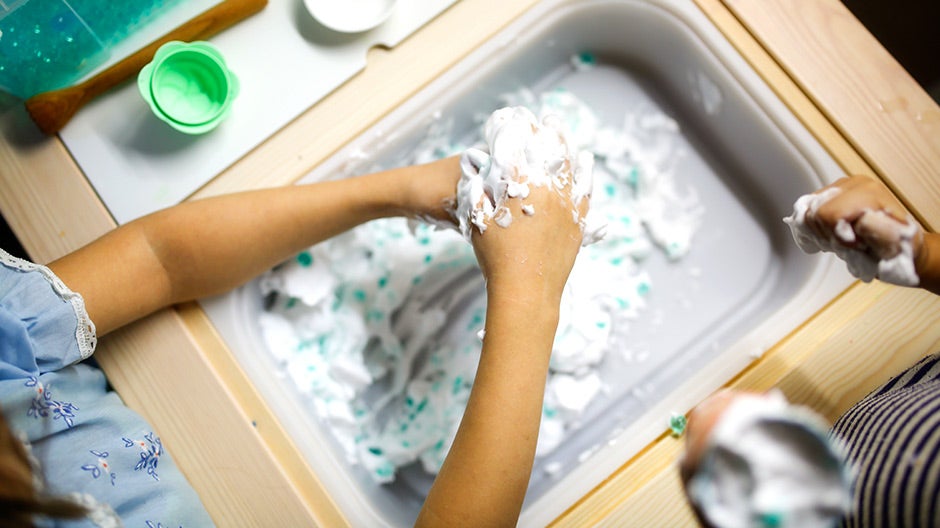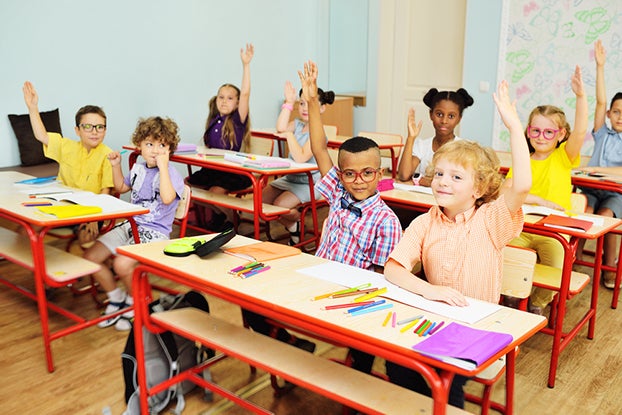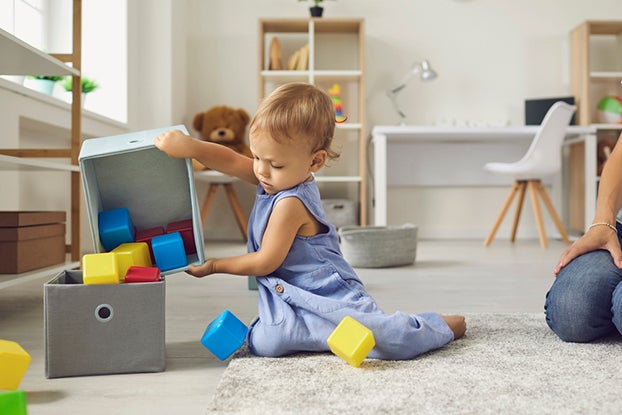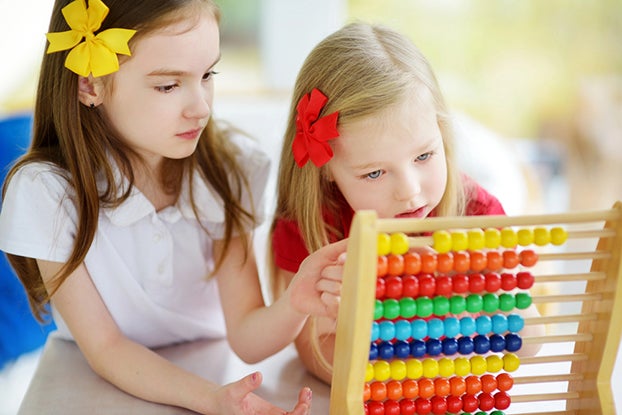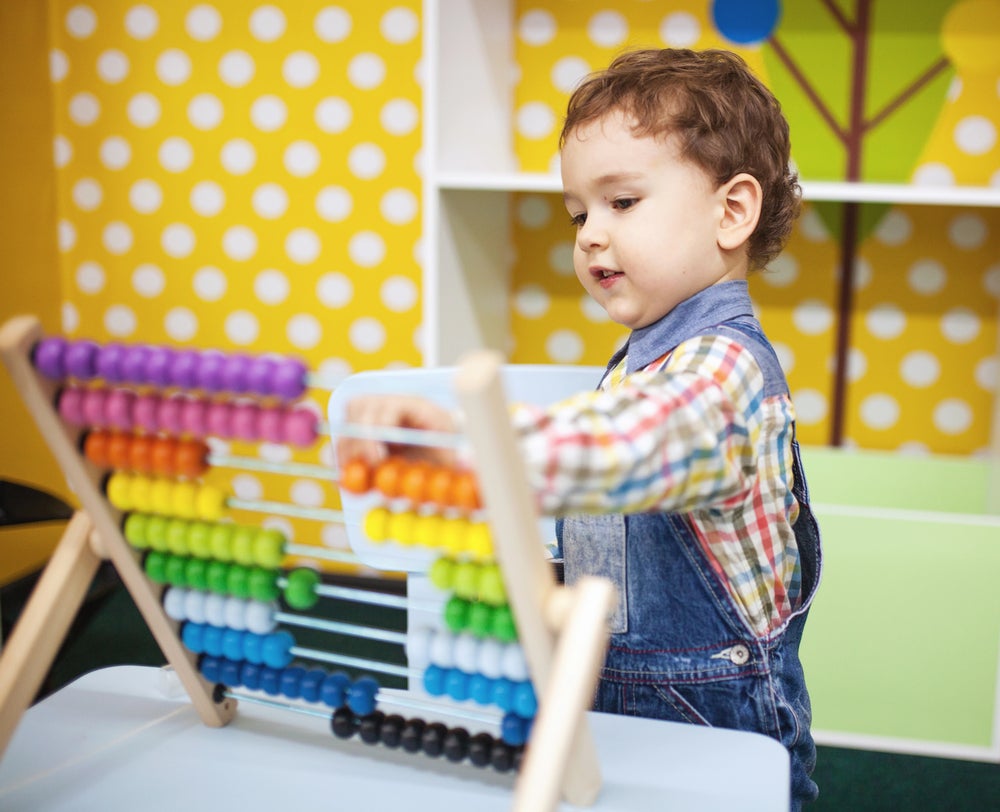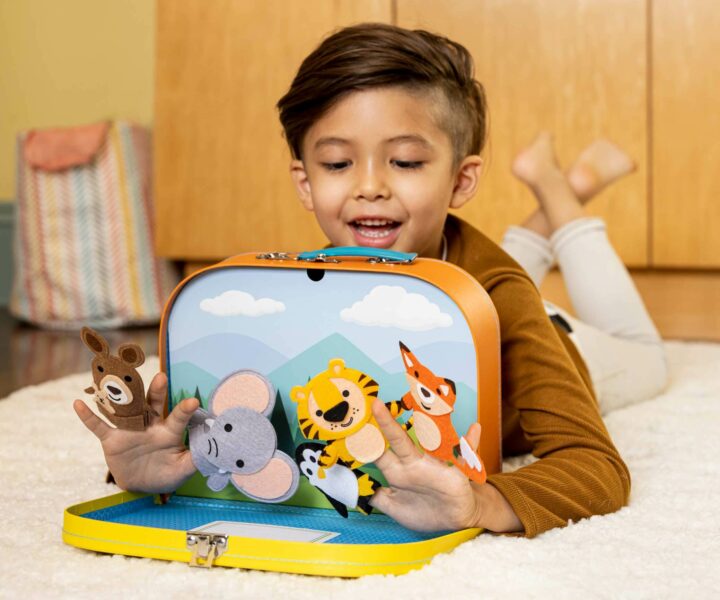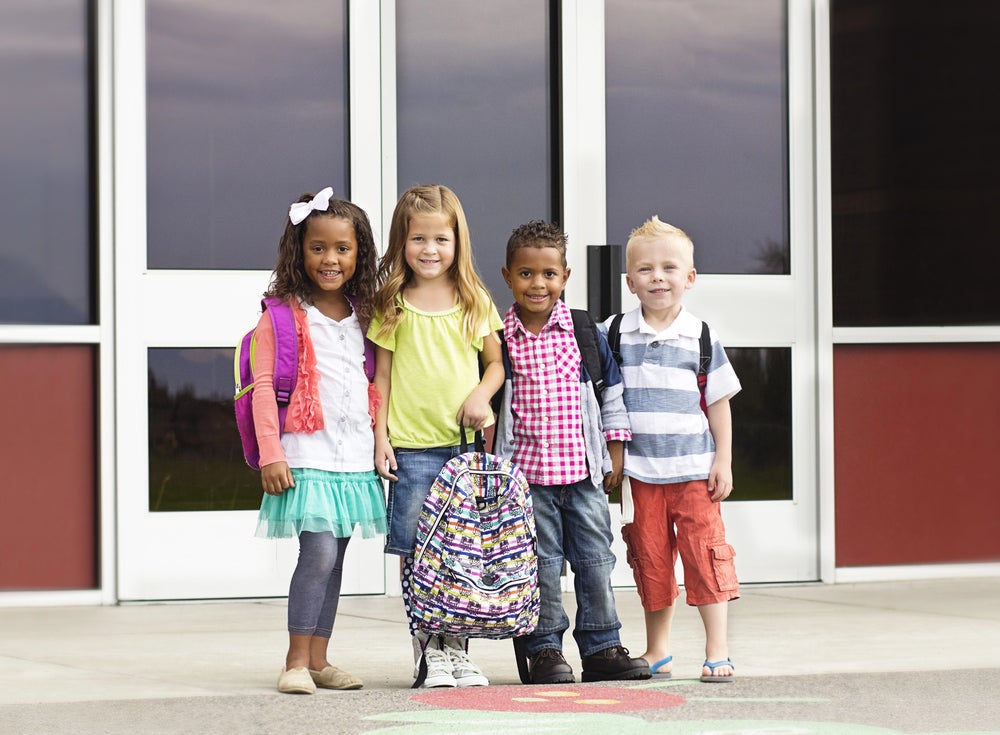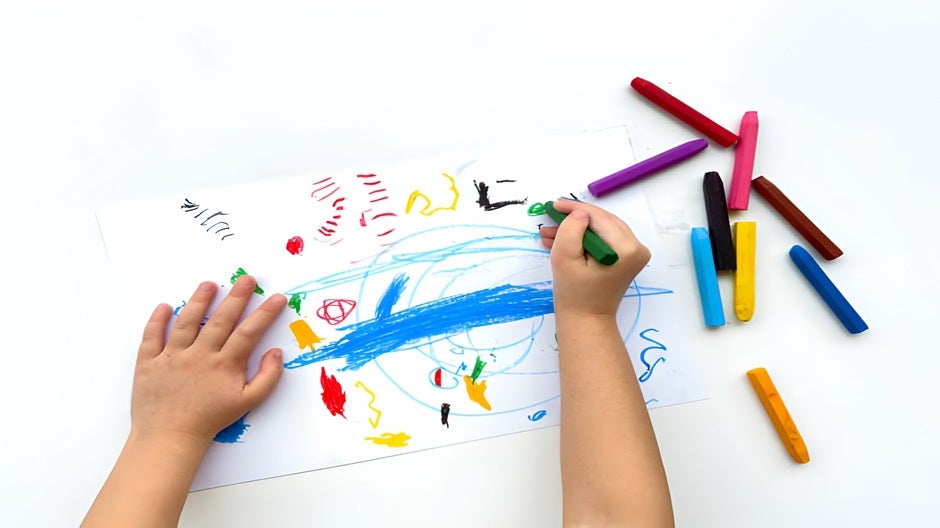Ask almost any parent what they want most for their child and you’ll likely get some variation on the theme of their child growing up to be a happy, kind human. And, of course we also wish for health, some degree of success and achievement, and great friendships and family as well. (That’s certainly true for myself as a mother of two!)
The question is, how do we help our kids get there?
The Short Cut
- Character is one of the 5 C’s at the heart of the Begin Approach to helping kids thrive in school and life
- Early learners with well-developed character skills enjoy better mental health and well-being, as well as higher income and educational levels later in life
- Character has become more important after the isolation and disruption caused by the COVID-19 pandemic
- Encouraging character development can help kids build a wide variety of other essential skills
- Developing the 5 C’s doesn’t need to be complicated. You can make a big difference in only 15 minutes a day!
It turns out that happiness, kindness, health (especially mental health), many measures of success (like income and education level), and strong relationships are all linked to a common set of early learning skills—ones that at Begin, we refer to as character.
What Is Character?
Character covers an expansive set of social-emotional skills like empathy, collaboration, and resilience that help define who your kids become and how they interact with the world.
For younger children, character incorporates naming emotions in themselves and in others, builds in self-regulation skills such as managing big feelings, and includes critical friendship skills such as taking turns. For older kids, character covers collaboration, conflict resolution, perseverance, and more nuanced emotions like jealousy that involve sophisticated vocabulary.
While character has always been an important aspect of child development, parents are focused on it now more than ever, in part because of the time we spent in varying degrees of isolation during the COVID-19 pandemic. During that time, children had fewer playdates and other social interactions than their parents wanted, and many studies have found widespread increases in anxiety and depression that can impact adults and children alike.
As we explore those impacts, many parents are discovering that character skills are even more important than they realized.
The Impacts of Character in School and Life
Character has been linked to very important outcomes in school and life. Learning through a character-focused curriculum is associated with stronger social-emotional skills, more positive attitudes towards school, more prosocial behaviors, fewer behavioral problems, improved academic performance, and less frequent or severe emotional distress.
That’s a lot! A landmark meta-analysis examining over 200 studies and more than 270,000 children found that teaching social-emotional skills was associated with significant improvements in both social behavior and academic performance, as well as lower levels of distress.
Given how important character is, it’s reassuring to know that there’s a lot we as caregivers can do to support it in our children, even if we didn’t necessarily receive the same type of character development ourselves growing up.
Simple Ways to Support Character
1. Use rich emotions-language around your child. Name emotions (e.g., happy, sad, frustrated, disappointed) to describe how you’re feeling and how you think your child is feeling. Use the names consistently so that your child becomes familiar with the terms and comfortable expressing their own emotions through words.
2. Establish clear family expectations. Be clear and consistent about your boundaries and expectations for manners and what’s considered appropriate in your home. Use phrases like “In our house, it’s always OK to talk about our feelings,” or “In our home, we don’t hit people when we’re frustrated,” or “In this family, we help each other out with our chores, because that’s one way we show our love.”
When you do this, you’re helping your child know what is expected of them, but also communicating that other families (including those of friends and extended family members) may operate differently, and that’s OK too!
3. Praise effort too, not just results. Part of developing a “growth mindset” and fostering grit and perseverance is praising your child for their effort, for sticking with something, or for trying something new (as opposed to just focusing on the end results).
4. Provide a sense of safety and security. Forming a strong attachment with your kids is one of the most important things you can do as a caregiver. When your child sees you, and by extension their home, as a safe place, they can feel confident to explore the world around them, discover and express themselves, and turn to you for help and support.
5. Don’t shy away from things that are hard. Give your child safe, age-appropriate opportunities to face their fears, push through something they may not enjoy, have a tough conversation, or navigate a conflict. These are all important experiences that develop their confidence and give them tools to engage with others. Allowing your child to try (and fail!) safely is critical.
Character across Developmental Stages
Depending on your child’s age and unique developmental trajectory, character might look a little different for you than for someone else. Below are some “checklists” you can use to consider what aspects of character you might be observing in your child.
Remember, every child develops differently, so you may see things that aren’t on these lists, or that are on the list under a different age from your child’s. That’s almost certainly OK, especially given that character consists of many skills that aren’t necessarily linear.
Also, these lists are not exhaustive—there are many other skills within character that you’re likely encountering at each age and stage. But this should give you a sense of what’s developmentally typical and why various skills matter.
2-Year-Old Checklist
Can name one or two of their own emotions (e.g., mad, sad, happy)
- A key part of managing emotions is being able to give them a name and to express how you’re feeling.
Is assertive in what they want (which often means saying “no” when an adult requests something)
- Your child’s assertiveness is a sign that they’re advocating for themselves. They’re voicing how they feel and what they want. This can be a challenging time for caregivers (believe me, I know!), but it’s completely normal and a healthy part of your child figuring out who they are and how they impact the world around them.
Notices when others around them are upset or hurt, and has appropriate reactions such as looking sad when someone else is crying
- This demonstrates that your child is noticing how others feel and is reacting by changing their own state or actions, which is the emergence of empathy.
Looks to a parent’s (or another trusted grown-up’s) face to see how they should react in a new situation
- Your child does not necessarily know how to interpret new situations, so looking to you and your reaction cues them on how to feel about a particular scenario. They’re taking cues from your emotions and behaviors.
Engages in parallel play—playing beside a peer but not necessarily “with” a peer
- Sharing space but operating independently is a precursor to actually interacting with and building play experiences with a peer. With parallel play, your child can observe others around them (e.g., how they’re playing and reacting to situations) without having to navigate the challenges that can come with interacting with others.
May show some reluctance to share or take turns
- Your child is working through the various skills it takes in order to share and take turns, including taking others’ perspectives and delaying their own gratification.
Occasionally engages in cooperative play—sometimes playing with a peer and not just beside them
- Your child may start dabbling in actually playing with a peer, which requires the coordination of many skills such as communication, sharing, taking turns, and taking others’ perspectives.
Can follow simple rules, such as picking up toys after playing
- This signals that your child can retain information (what the request is), avoid distractions, and do something they may not want to do in order to please or help others.
3-Year-Old Checklist
Can name several of their own emotions (e.g., mad, sad, happy) including some nuanced emotions such as frustrated versus angry
- A key part of managing emotions is being able to give them a name and to express how you’re feeling.
Can name some emotions in others based on facial expressions, body language, and behaviors
- This demonstrates that your child is noticing how others feel and can accurately identify and name those emotions, which is key for developing empathy.
Notices other children in a setting (e.g., park, preschool) and attempts to join in on play
- Humans are naturally social and seek at least some level of interaction and companionship. Your child is recognizing others and attempting to make connections and join in on the fun, which takes the coordination of many social skills and represents a shift from “I” to “we.”
Calms down within about 10 minutes after being separated from a trusted caregiver (e.g., preschool drop-off)
- Your child is demonstrating their ability to regulate their big feelings, and an awareness of routine and secure attachment (i.e., they know their loved one will come back for them later).
Engages in cooperative play—playing with a peer and not just beside them
- Playing cooperatively (or competitively) requires the coordination of many skills, such as communication, sharing, taking turns, and taking others’ perspectives.
Can follow simple rules, such as picking up toys after playing
- This signals that your child can retain information (what the request is), avoid distractions, and do something they may not want to do in order to please or help others.
Begins to initiate play (with self and others)
- This shows your child is not dependent on someone else coming up with play ideas—they can initiate play as well, which demonstrates their creativity and desire to interact with others.
Demonstrates dramatic play (e.g., acting out scenes such as playing house, or pretending to be an animal)
- Dramatic play is key for children exploring topics, trying on roles, and supporting their communication and storytelling skills.
4-Year-Old Checklist
Explores concepts such as what is fair or what good versus bad behaviors are
- These early stages of exploring morality and social norms are important for developing the attitudes and behaviors that allow your child to get along with others and function in society.
Develops friendships that go beyond simply playing with peers of the same age and involve things like shared interests, humor, and wanting to spend time together
- Early friendships are where your child will practice skills like sharing, understanding others’ feelings, regulating their own emotions, and performing altruistic acts (like giving away a cookie) to make others happy.
Demonstrates dramatic play (e.g., acting out scenes such as playing house, or pretending to be an animal)
- Dramatic play is key for children exploring topics, trying on roles, and supporting their communication and storytelling skills.
Can comfort someone else who may be sad or hurting (e.g., hugging a friend who is crying)
- A deepening sense of empathy includes not just recognizing the feelings of others, but understanding those feelings and what actions might be helpful or comforting for a friend.
Alters their behavior to reflect different environments or situations (e.g., behaves differently in a library than at a park)
- This shows your child understands that some behaviors are perfectly acceptable in some places but not in others, and that they can alter and control those behaviors as a sign of respect and wanting to fit in.
Enjoys helping
- Performing simple, developmentally appropriate chores and ways of helping allows your child to demonstrate that they care, as well as giving them critical life skills such as learning how to clean or prepare food.
Can use more sophisticated or nuanced terms to name their own emotions and the emotions of others, such as feeling disappointed versus angry
- A key part of managing emotions is being able to give them a name and to express how you’re feeling. A larger emotional vocabulary allows children to more specifically communicate what they’re feeling and understand how others are feeling.
5-Year-Old Checklist
Can follow rules and take turns when playing games with other children
- Play is the perfect time and place to practice the skills required to collaborate with others in school and in life.
Helps with developmentally appropriate chores at home, such as setting out the forks and spoons at mealtime, or putting clean towels away in the closet
- Chores help your child learn life skills while also delaying their own gratification (e.g., getting to play) to help serve and support others.
Alters their behavior to reflect different environments or situations (e.g., behaves differently in a library than at a park)
- This shows your child understands that some behaviors are perfectly acceptable in some places but not in others, and that they can alter and control those behaviors as a sign of respect and wanting to fit in.
Develops friendships that go beyond simply playing with peers of the same age and involve things like shared interests, humor, and wanting to spend time together
- Early friendships are where your child will practice skills like sharing, understanding others’ feelings, regulating their own emotions, and performing altruistic acts (like giving away a cookie) to make others happy.
Sings, dances, puts on puppet plays, or creates work of art and wants to share with others (e.g., “Look at me!” or “I made this for you.”)
- This shows your child is learning to express themselves and wants to gauge others’ reactions and/or delight someone else with their gifts.
Demonstrates dramatic play (acting out scenes such as playing house, or pretending to be an animal)
- Dramatic play is key for children exploring topics, trying on roles, and supporting their communication and storytelling skills.
Can comfort someone else who may be sad or hurting (e.g., hugging a friend who is crying)
- A deepening sense of empathy includes not just recognizing the feelings of others, but understanding that feeling and what actions might be helpful or comforting for a friend.
Demonstrates increasing levels of independence, such as dressing himself, brushing her own teeth, directing his own actions during unstructured time (e.g., choosing a book to read when given some free time), or doing a simple chore without being asked
- This demonstrates your child’s ability to guide their own actions and confidence in their own ability to do things.
6-Year-Old and Up Checklist
By age 6, many children will be in some type of formal schooling environment, and some will also be in organized sports, music lessons, and informal play dates. All of these activities give your child a LOT of opportunities to interact with peers, grown-ups, and new people.
You’ll likely notice your child taking on some of the behaviors or mannerisms of their peers, which in some cases can be adorable, and in other cases not so cute. Kids in this stage also demonstrate a remarkable ability to be empathetic, and to deeply feel what others around them might be feeling. Developing communication skills will allow most at this stage to express how they’re feeling, although this will continue to be an area they’ll work on (likely for the rest of their lives!).
Know that while many of the character traits you’re observing at this stage will seem relatively set and consistent, they’re not “fixed.” Your child will still grow and change over time and in different circumstances. Character development is a lifelong process!
Supporting Character with Begin
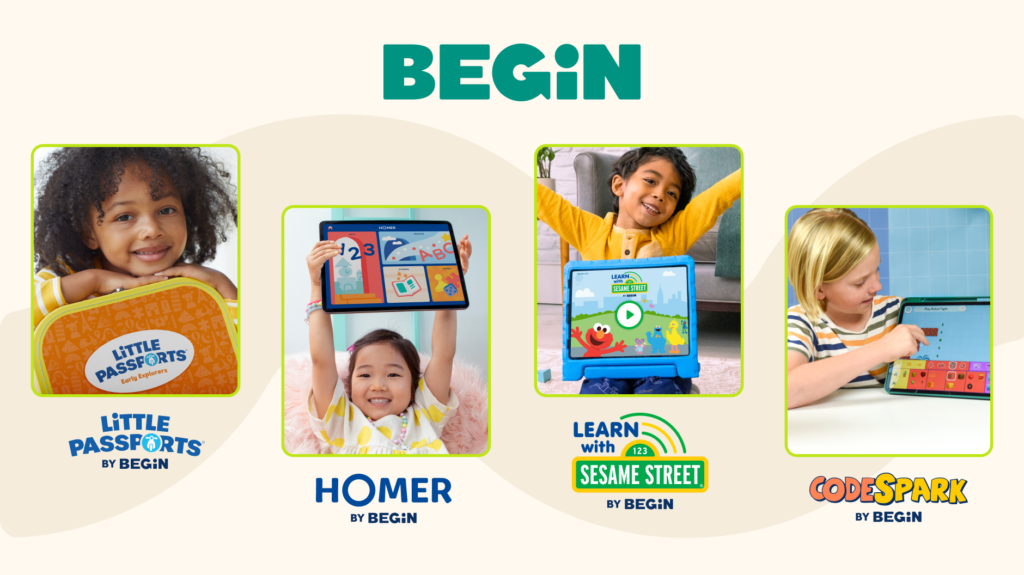
Character is a critically important “C”—not just for your child’s short-term development, but for their entire lifespan. The character skills they learn now will help them achieve the lifelong health and happiness you want for them.
At Begin, we know this, and we include character-building activities—like social-emotional games with favorite Sesame Street friends—in our learning products whenever we can. Check out our comprehensive learning membership to see how they all come together to help your child thrive in every area of life.
There are many things you can do to support and reinforce your child’s character development. It’s truly a lifelong process of growth and development, and we’re here to help!


